- Home
- Dean Koontz
What the Night Knows Page 18
What the Night Knows Read online
Page 18
While Brittany goes directly to the corner bar in the living room to mix a pair of Grey Goose martinis, Reese proceeds to the bedroom to retrieve the diamond-and-emerald necklace that is her birthday present. He can’t resist stepping into the master bathroom for a quick look in the mirror, to assure himself that his pocket handkerchief is properly presented, his necktie precisely knotted, and his hair in place.
Because the time has come to take absolute control of the horse and to smother every expression of its will, the rider allows itself some fun. After the fop assesses his appearance with satisfaction, his reflection changes in a blink, and instead of himself, he sees Alton Turner Blackwood, whose spirit feet are in Reese Salsetto’s stirrups. Hunched back, sharp chin, brutish jawbones, half-ripe and entirely cruel mouth, black-hole eyes with enough gravity to pull whole worlds to destruction. Even Reese, a fearless sociopath, cries out in fear, but his cry is soundless, for he no longer has control of his body. He is a prisoner in his own skin, shackled by bones he once controlled, a powerless observer behind the windows of his covetous eyes.
Reese joins fetching Brittany in the living room, not with her gift in hand but with the sound suppressor fitted to the barrel of his pistol. When she turns toward him, offering a martini, he shoots her twice in the abdomen and once in the chest. The shots make a shushing sound, as if admonishing Brittany to die quietly.
Although the rider is a connoisseur of torture and relishes the humiliation and the pain of others, it wastes no time with Brittany Zeller because she is too hard for its taste, too knowing, long in the process of extinguishing her own light. Instead, the rider yearns to rend what is tender, to corrupt what is innocent, and to destroy what shines.
Leaving the dead blonde in the living room, Reese Salsetto—under the firm control of his rider—returns to the master bedroom, takes a box of ammunition from a nightstand drawer, and replenishes the extended magazine of the pistol, which when fully loaded holds sixteen rounds.
A family is living its last hours. Father, mother, son, and daughter. The mother, seen in Reese’s memory, is succulent and sure to be exciting, but the eighteen-year-old daughter is luminous and untouched, a rare flower the despoiling of which will be a fine achievement. He will kill the father, then disable the son and force him to watch the use, abuse, and ruination of the mother and the girl.
Reese says aloud, “You’ve been wanting the girl yourself, Reese, and now you’ll have her.”
He turns out the living-room lights.
The re-enactment continues, and this time everything will be done right, as it had almost been done back in the day. The promise to John Calvino will be kept. The Promise.
Reese says, “It’s warm and cozy in the skin again. Don’t you think so, Reese? Aren’t you warm and cozy, Reese?”
In the kitchen, he stands staring at a rack of knives. They will have knives at their house. He can carve the girl with their cutlery.
As he turns out the kitchen lights and retreats along the entry hall to the foyer, Reese says, “This will be such fun, Reese. Don’t you think it’ll be fun?”
30
ON THE EVENING OF OCTOBER FOURTH, ZACH SAT IN HIS room, drawing a nightmare when what he really wanted to be drawing was Laura Leigh Highsmith, especially her lips.
Following the recent weirdness, life had defaulted to normal so completely that Zach had returned the restored meat fork to the kitchen drawer from which he had secretly taken it. Already the edges were worn off the memory of the encounter in the service mezzanine. He abandoned both of his original explanations—supernatural or insanity—and convinced himself that a logical answer would present itself if he just stopped being a bonehead and focused on real things like math, cool military history, and Laura Leigh Highsmith, goddess, and let his subconscious eventually puzzle out the truth of what had happened.
His half-assed expedition into the stupid mezzanine embarrassed him because now he seemed to have been like some little kid playing slay-the-dragon with a trash-can lid for a shield and a fence picket for a sword. That was a game of his when he was an idiot five-year-old. His dad, in a rare but spectacular failure of parenting wisdom, captured slay-the-dragon on stinking video and from time to time, much to Zach’s mortification, reran the whole sordid featurette to the delight of old Naomi and Minnie who, of course, called him Saint George for days afterward. Sometimes Zach wondered just how much humiliation a person could take before he finally stopped thinking that he could ever be a marine.
Anyway, life returned to almost mind-numbing normality until the nights of October second and third, when he dreamed twice about the freaking freak with the ginormous hands. This time the dream didn’t take place in pitch-blackness but at night in a carnival with all the amusement rides ablaze with neon and blinkers, spotlighted show tents, and strings of colored lights festooning the concourse from one end of the midway to the other. Zach saw the shambling monstrosity with the humongous hands this time, and the guy was the kind of ugly that makes ordinary ugly people feel like prom kings and queens.
In the first dream, all the amusement rides were turning and whipping and undulating, but no one was aboard any of them, and the dumb-ass cliché of a nightmare carnival was dead silent, as if it were in a vacuum. The only people anywhere on the grounds were Zach and Ugly Al. He didn’t know how he knew the guy’s name was Al, but that’s what he kept thinking in the dream, and of course Ugly Al chased him all through the stupid carnival, almost nailing him again and again. This dream should have been as basically boring as yogurt, because over the years Zach had been chased in other nightmares by way uglier idiot bogeymen than Ugly Al, but it kept getting scarier until Zach burst into a show tent, hoping to hide, and suddenly there was music.
He was in a sleazy striptease show, and women in G-strings and pasties were on the stage. It was the first time he ever remembered being embarrassed in a nightmare. The strippers weren’t moving in a sexy way, but jerkily, clumsily, and then Zach realized they were dead women, zombie strippers, all women Ugly Al had killed. They had stab wounds and gunshot wounds and worse, and when Zach turned to run from the tent, Ugly Al was right there, maybe three feet away.
The freak was dressed in a khaki shirt and khaki pants with lots of pockets, and he wore black Nazi boots with shiny steel toes, and from one of his pockets he withdrew this knife that was so sharp it could cut you if you just looked at it. The godawful bump-and-grind music was still playing, and Ugly Al spoke in a low voice that made you wish you had quills and could curl up in a ball like a porcupine. He said, “Come here, pretty boy. I’m gonna cut off your peepee and shove it down your throat.” Then Zach woke in a sweat, with a superbad need to go to the bathroom.
The next night, the carnival was the same and silent except for one desperate voice. Ugly Al didn’t chase Zach this time. Naomi was somewhere on the midway, crying out to Zach for help, voice faraway and frightened. Ugly Al hunted Naomi, and Zach wanted to warn her, for God’s sake, to be quiet, but he had no voice of his own. He searched frantically for Naomi around the Tilt-a-Whirl, behind the Whip, around the Tip Top and the Caterpillar, under the silently turning Ferris wheel, past the snow-cone and the cotton-candy stands, in sideshow tents and game arcades, her voice always somewhere that he wasn’t—and then she screamed.
Zach saw Ugly Al dragging Naomi by her hair, dragging her along the sawdust-carpeted concourse, Naomi silent now, doing nothing to resist. Zach almost caught up with them, got close, close enough to see that where Naomi’s eyes should have been there were these coins, quarters, black quarters, and something dark in her mouth, her hands tied together, thumb to thumb, little finger to little finger, with a chicken egg cupped in them. Worst of all—he should have seen it first, but he saw it last—worst of all was the knife, the cut-you-if-you-looked-at-it knife, shoved to the hilt in her throat. Zach tried to scream, couldn’t, and Ugly Al raced away at high speed, dragging dead Naomi. The carnival concourse telescoped out, suddenly going on to infinity, and Ugly Al
dragged Naomi away into forever while Zach fell farther and farther behind, screaming soundlessly until he woke up screaming into a pillow.
He hoped he wouldn’t dream of the freak three nights in a row.
The mood in the house had changed this afternoon. Dinner was the best time they had in a while, everyone with something interesting to say, quick and funny. Zach knew the rest of them felt it too, as if for weeks the air was thick with a pending thunderstorm and everyone waiting for lightning, and this afternoon the weather changed.
Now, alone in his room, he finished his fourth half-assed pencil portrait of old Ugly Al. Each of the four looked somewhat different from the others, and none caught the full-on weirdness of the guy. When you were drawing from a dream, you were working with less even than a memory, so Zachary couldn’t beat himself up too much for getting it only three-quarters right.
He sprayed the portrait with fixative, tore it out of the tablet, and started to draw Laura Leigh Highsmith’s lips, the full purse of the mouth from the philtrum to the suggestion of the chin muscles. He worked from memory now, not just from a dream, and in this case his memory was as sharp as if he had been drawing from real life.
Reading a book in bed, Naomi sat propped against a sumptuous pile of pillows so feathery they seemed capable of levitating like great slow birds and carrying her aloft with them. Until recently, when she read in bed, she wore mere pajamas, pathetic childwear, but not anymore. Now she sat attired in a Vietnamese ao dai, a flowing tunic-and-pants ensemble made of colorful silk, which she discovered during an all-girls shopping afternoon with her mother and Minette. This exotic garment—deliriously glamorous and drop-dead chic—was infinitely more appropriate for her than were kiddie pajamas, now that she was closer to twelve than to eleven. The ao dai served as day and evening wear, it was not for sleeping, but she intended to sleep in it anyway, and in the two others now in her wardrobe. A mere child sleeps in a wrinkled mess of cotton, drooling, hair disarrayed, but a young lady strives to look her best even when unconscious.
Minnie, who would be an exasperating child for years yet, sat at her play table, bagged in a typically dumpy pair of jammies with, of all things, a precious teddy-bear pattern. She worked intently on one of her bizarre LEGO-block structures, all strange angles and cantilevered sections that should have collapsed but didn’t.
“What is that funky thing?” Naomi asked.
“I don’t know. I saw it in a dream.”
“That’s where they come from? Buildings you see in dreams?”
“Not the other ones. Just this. But it’s not a building. It’s something. I don’t know what. And I don’t have it right, either.”
“Don’t you ever dream about unicorns and flying carpets and wishing lamps?”
“No.”
Naomi sighed. “Sometimes I worry myself sick about you, Mouse.”
“I’m good. I’m fine. Don’t call me Mouse.”
“You know what? I could be your dream coach! I could teach you how to dream right, with golden palaces and crystal castles and a fabulously colorful tent city around a desert oasis, wise old talking turtles, geese that fly underwater but swim through the air, and ice skating in the moonlight with the handsomest boy ever but he turns out to be a kind of griffin except all lion and just the wings of an eagle, and he flies over a shining city with you riding on his back.”
“No,” Minnie said, concentrating on the LEGO thing.
“I’d be a great dream coach!”
“Aren’t you reading a book?”
“It’s a great book. It’s about this very cultivated dragon who teaches this savage girl how to be civilized because she’s got to become a Joan of Arc to her people. Should I read it out loud?”
“No.”
“Then what do you want? Sometimes, dear child, you are quite inscrutable.”
“I want some silence so I can think about this thing.”
“Yes, of course, being a whiz at LEGOS is just like being a chess master, such profound strategy requires absolute silence.”
“Absolute,” Minnie agreed.
Ensconced in her lavish mound of pillows, Naomi returned her attention to the book, wondering why on earth she even tried to be a responsible older sister, why she struggled to lift this benighted little squirt out of the sandbox when, clearly, not even a cultivated dragon could have done the job.
The new mood in the house encouraged Nicolette, but around a tiny grain of frustration, her mind began to secrete a black pearl of worry. Intuition, intense but unspecific, warned her that the children were in some way at risk. Curiously, this concern began with a difficulty she was having with her current painting.
She seldom returned to work in her studio following the post-dinner family time, but this evening she wanted to study the canvas that was in progress, perhaps for a couple of hours.
John was understanding, as always. He said that he would read in the library and that she shouldn’t be concerned if he came to bed late, as he felt so wide-awake he might be in the grip of insomnia.
She took a snifter of brandy to her studio, though she rarely had anything to drink except wine at dinner, and though she had never previously wanted—or needed—brandy to assist her in the evaluation of a problem painting. She put the snifter on the tall table with the yellow roses that had been arranged by Imogene a few hours earlier.
Taped to the upright of the easel, above the current canvas, was a photograph of Zach, Naomi, and Minnie, taken two weeks earlier. For the photo, Nicky had carefully posed them framed by the living-room archway, and this group portrait was the subject of her latest work.
She had planned a painting informed by John Singer Sargent’s The Daughters of Edward Darley Boit: light in the foreground fading to deep shadow, depth of field, and spatial mystery against which the clarity of the children’s character would be explicit.
In the painting as in the photo, the kids stood in an unexpected order, not in ascending age and not girls together. Naomi was in the hall, in the foreground, arms crossed and feet planted apart, a power stance, challenging the artist, the world. Behind and to the right of Naomi, Zach posed casually in the archway, hands in his pockets, self-possessed. Farthest from the artist, within the living room, stood Minette in a white dress, luminous in shadow, entirely clear.
The spaces and the details of the clothing were nearly complete, and the quality of light was almost as Nicky wanted it, though she had not yet done the fine work on the faces, which were currently just cranial structures and muscle masses, otherwise eerily blank. She had come to a halt because the painting wasn’t saying what she intended that it should say.
Among other things, she meant to show personality expressing itself powerfully regardless of distance from the viewer or the nature of the lighting. Each child should be known equally well for the person—for the grace—that she or he was. Nicky intended the painting to be a quiet but moving celebration of individuality.
Instead, it felt like a painting about loss. As if she were re-creating her children not from a photograph but from her memory of them after they were dead.
This perception at first annoyed her, then disturbed her, and finally filled her with an abiding disquiet. She told herself that the unfinished faces were the cause of her uneasiness, those blank bone and muscle masses, but she knew better. She had worked in this manner before, toward a culmination in faces, without any problem.
For the past three days, the painting increasingly projected the theme of loss until she could not study it long before disquiet escalated into a gnawing anxiety. In the brushstrokes she had laid down, she could see—could feel—the less acute but more enduring grief that is called sorrow, as if she had done this work years after some unthinkable tragedy.
She had never labored on the canvas while in a somber mood. She approached the picture with enthusiasm, affection, and love. At all times, she worked with pleasure, which often rose to a condition of delight. Yet the piece appeared despairing, as though an
artist with a darker set of mind had come in every night to rework the portrait.
The photograph, a computer printout on a full sheet of paper, was different in many ways from the canvas because she never had any intention of merely reproducing it in paint. Now she peeled it off the upright of the easel to inspect it closely.
She had instructed the kids to remain deadpan, because she did not want to paint from a shot in which they were mugging for the camera; she intended to supply each with his or her most signature expression. Maybe they subtly defied her instructions, assuming just enough expression to influence her subconsciously. But, no, each was as deadpan as could be.
Then she noticed the shadowy figure.
The photo had been taken in the evening, with overhead light in the hallway but only one table lamp aglow in a corner of the living room beyond the archway. Behind Minnie, everything faded to darkness, and the only thing to be seen in that gloom was a tall mirror on the farther wall, which was expressed only as a pale shimmer of reflected light, its baroque frame invisible. In that dim rectangle loomed a dark figure that could not be any of the kids or Nicky because none of them was positioned to reflect in the mirror.
She carried the printout of the photo to the slanted draftsman’s table in one corner of the studio. A large lighted magnifying lens, fixed to the table on a swing arm, brought the mysterious figure into fuller view. The silhouette lacked features, but it appeared to be a tall, stoop-shouldered man.
No one but she and the kids had been present. No one had watched from the hallway, and no one other than Minette had actually been in the living room. Zach, the nearest to Minnie, stood in the archway, on the threshold of the chamber.
Nicky’s uneasiness grew the longer she studied the silhouette. She cautioned herself that what she saw might not be a person but a trick of lighting or a reflection of some item of furniture in the living room.

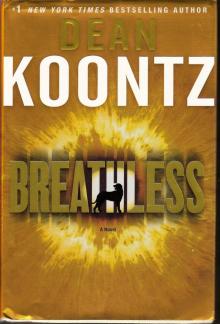 Breathless
Breathless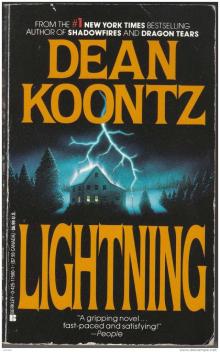 Lightning
Lightning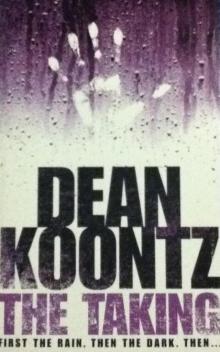 The Taking
The Taking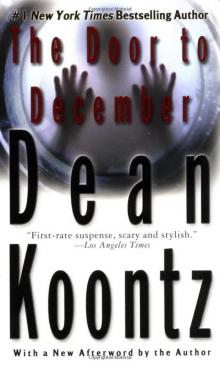 The Door to December
The Door to December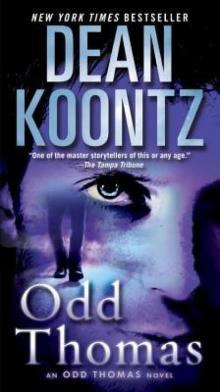 Odd Thomas
Odd Thomas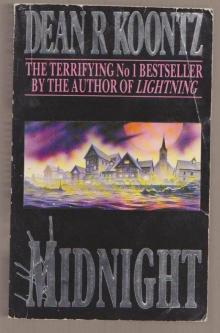 Midnight
Midnight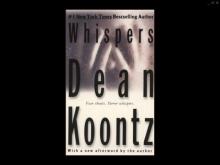 Whispers
Whispers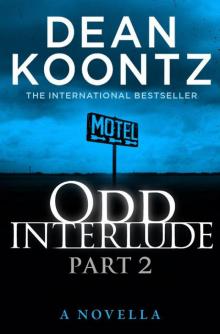 Odd Interlude #2
Odd Interlude #2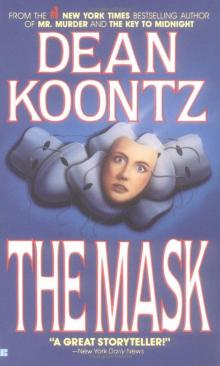 The Mask
The Mask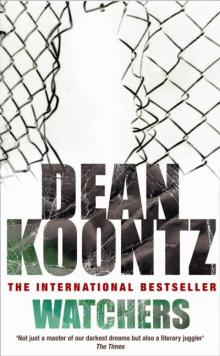 Watchers
Watchers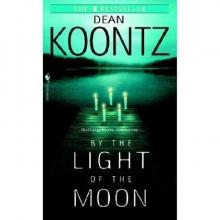 By the Light of the Moon
By the Light of the Moon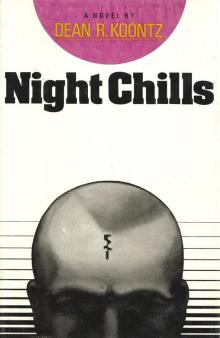 Night Chills
Night Chills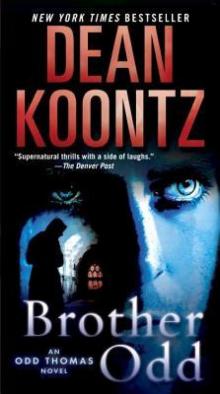 Brother Odd
Brother Odd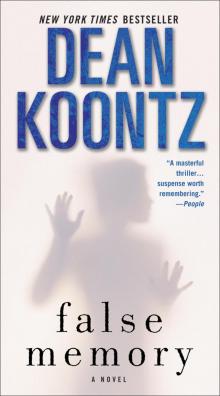 False Memory
False Memory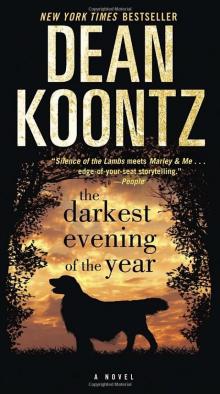 The Darkest Evening of the Year
The Darkest Evening of the Year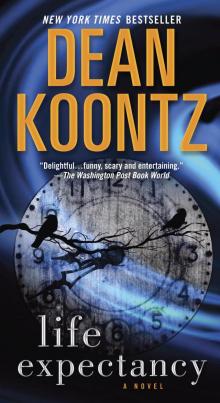 Life Expectancy
Life Expectancy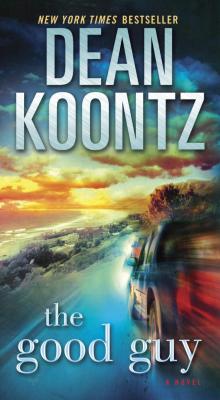 The Good Guy
The Good Guy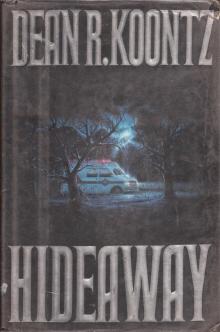 Hideaway
Hideaway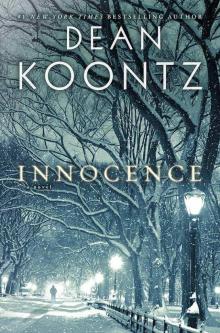 Innocence
Innocence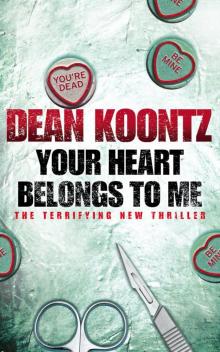 Your Heart Belongs to Me
Your Heart Belongs to Me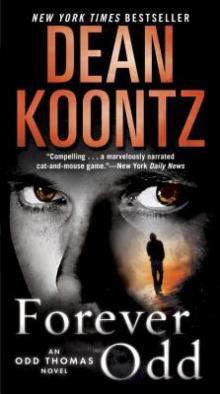 Forever Odd
Forever Odd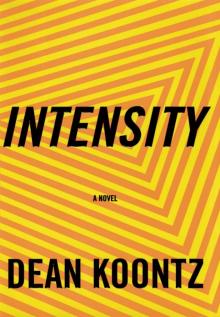 Intensity
Intensity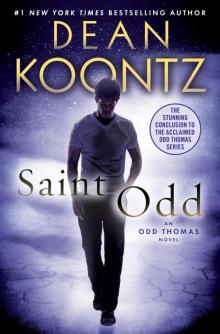 Saint Odd
Saint Odd Dragon Tears
Dragon Tears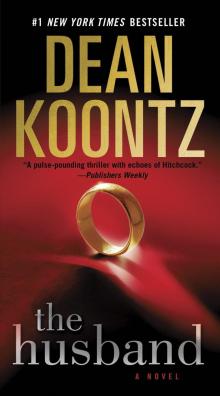 The Husband
The Husband Final Hour
Final Hour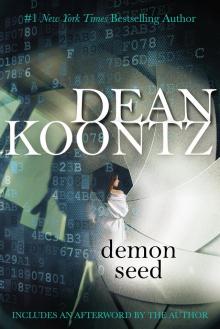 Demon Seed
Demon Seed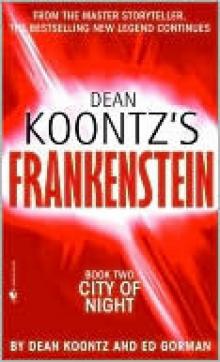 City of Night
City of Night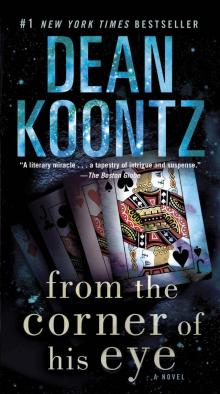 From the Corner of His Eye
From the Corner of His Eye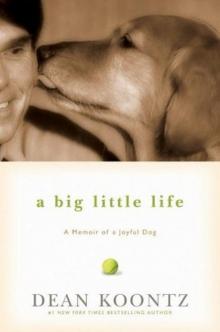 A Big Little Life: A Memoir of a Joyful Dog
A Big Little Life: A Memoir of a Joyful Dog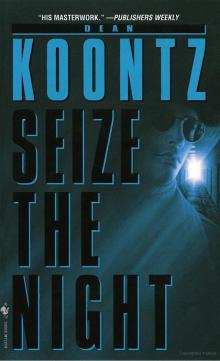 Seize the Night
Seize the Night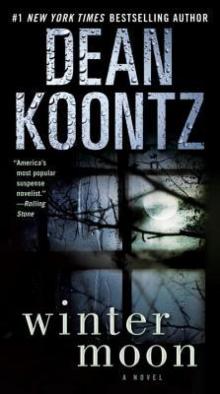 Winter Moon
Winter Moon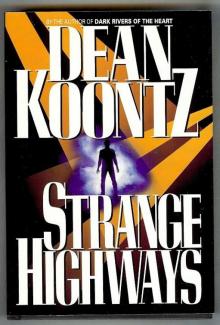 Strange Highways
Strange Highways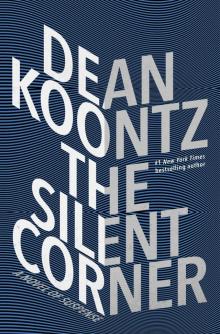 The Silent Corner
The Silent Corner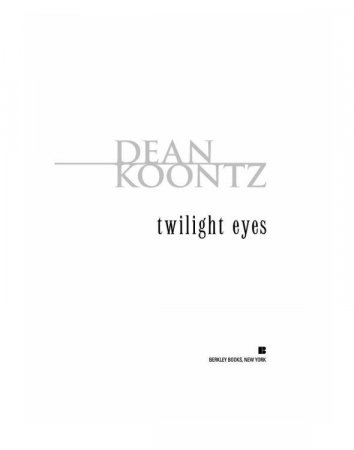 Twilight Eyes
Twilight Eyes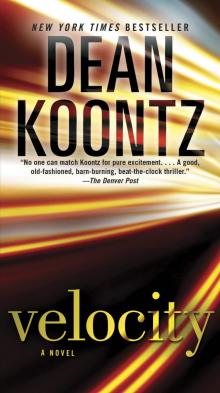 Velocity
Velocity The Bad Place
The Bad Place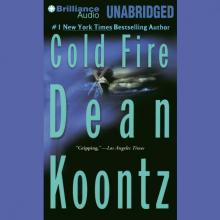 Cold Fire
Cold Fire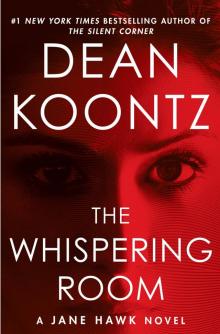 The Whispering Room
The Whispering Room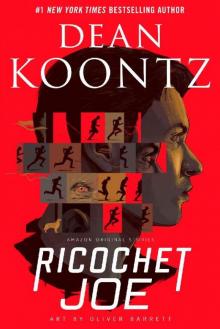 Ricochet Joe
Ricochet Joe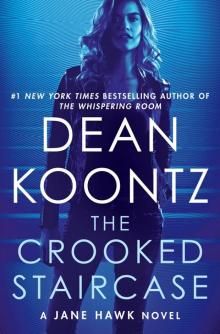 The Crooked Staircase
The Crooked Staircase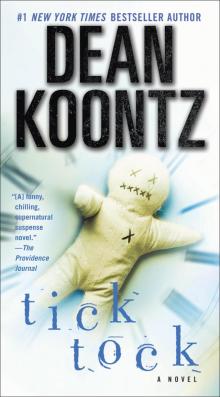 Tick Tock
Tick Tock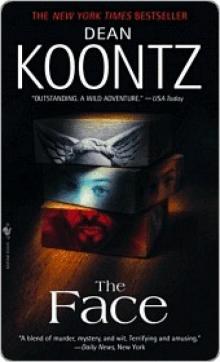 The Face
The Face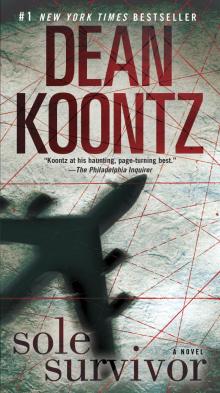 Sole Survivor
Sole Survivor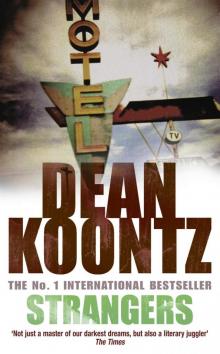 Strangers
Strangers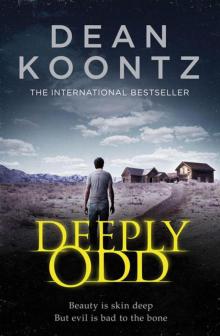 Deeply Odd
Deeply Odd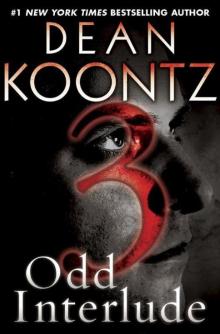 Odd Interlude #3
Odd Interlude #3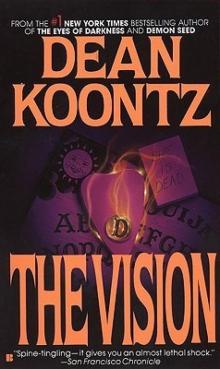 The Vision
The Vision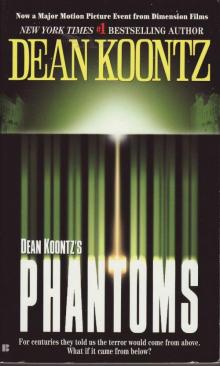 Phantoms
Phantoms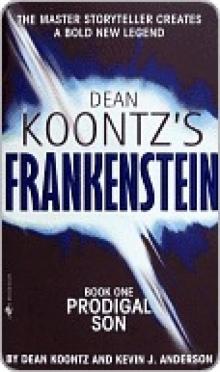 Prodigal Son
Prodigal Son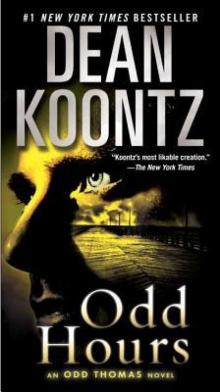 Odd Hours
Odd Hours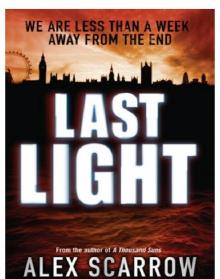 Last Light
Last Light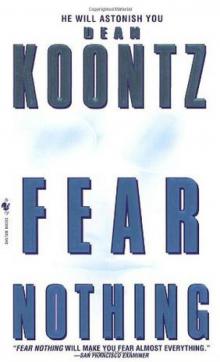 Fear Nothing
Fear Nothing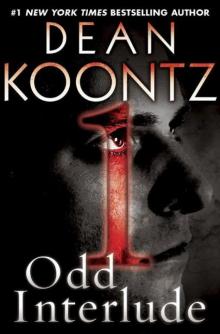 Odd Interlude #1
Odd Interlude #1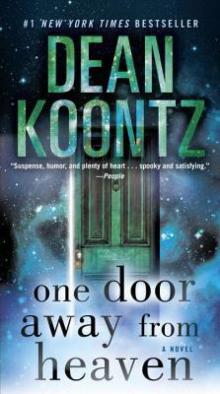 One Door Away From Heaven
One Door Away From Heaven Koontz, Dean R. - Mr. Murder
Koontz, Dean R. - Mr. Murder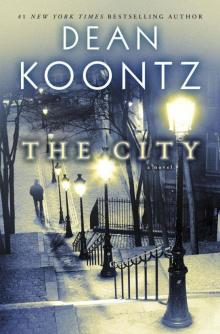 The City
The City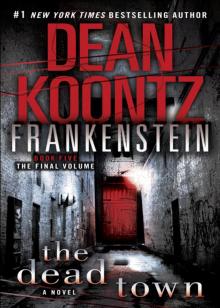 The Dead Town
The Dead Town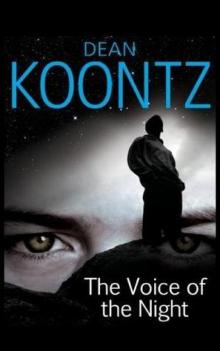 The Voice of the Night
The Voice of the Night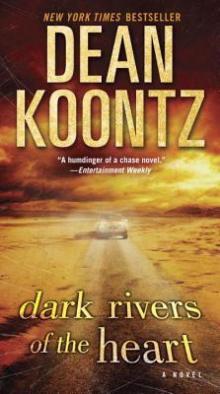 Dark Rivers of the Heart
Dark Rivers of the Heart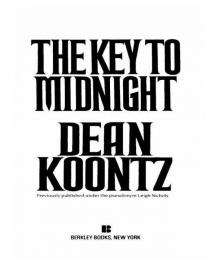 The Key to Midnight
The Key to Midnight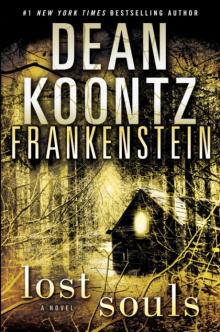 Lost Souls
Lost Souls Odd Thomas: You Are Destined To Be Together Forever
Odd Thomas: You Are Destined To Be Together Forever Odd Apocalypse
Odd Apocalypse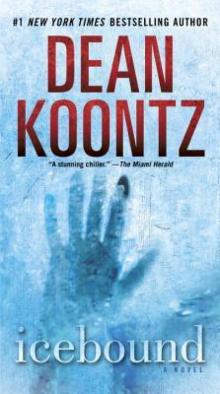 Icebound
Icebound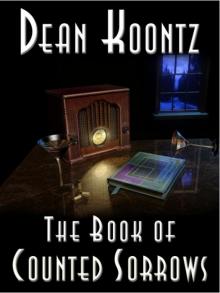 The Book of Counted Sorrows
The Book of Counted Sorrows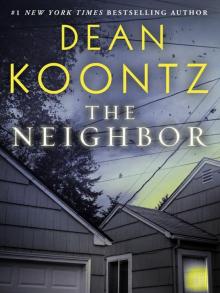 The Neighbor
The Neighbor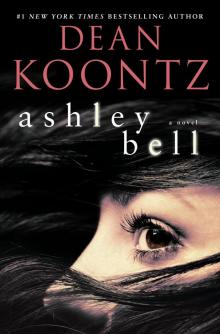 Ashley Bell
Ashley Bell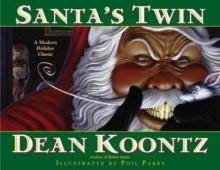 Santa's Twin
Santa's Twin Dead and Alive
Dead and Alive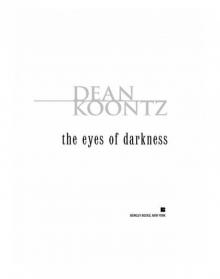 The Eyes of Darkness
The Eyes of Darkness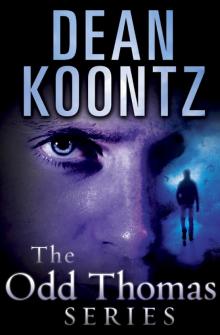 The Odd Thomas Series 4-Book Bundle
The Odd Thomas Series 4-Book Bundle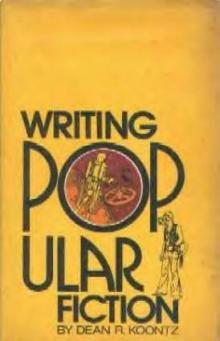 Writing Popular Fiction
Writing Popular Fiction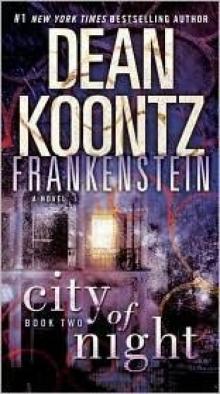 City of Night f-2
City of Night f-2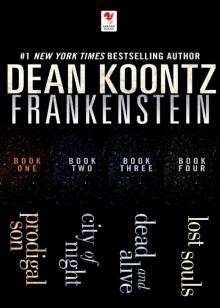 Dean Koontz's Frankenstein 4-Book Bundle
Dean Koontz's Frankenstein 4-Book Bundle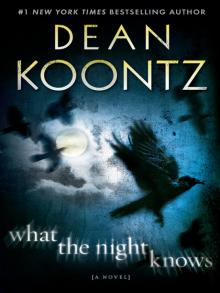 What the Night Knows: A Novel
What the Night Knows: A Novel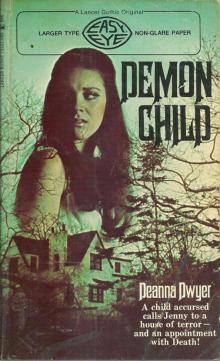 Demon Child
Demon Child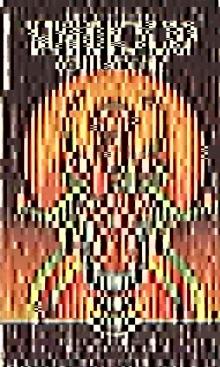 Starblood
Starblood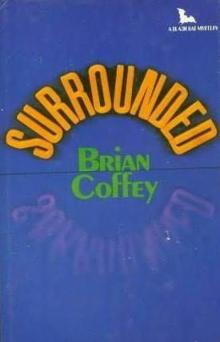 Surrounded mt-2
Surrounded mt-2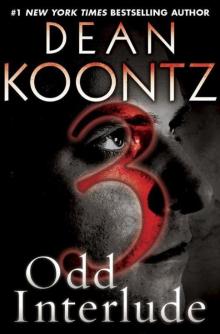 Odd Interlude #3 (An Odd Thomas Story)
Odd Interlude #3 (An Odd Thomas Story)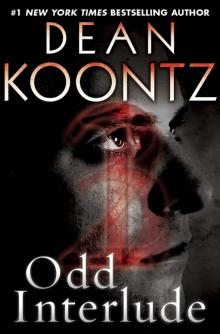 Odd Interlude
Odd Interlude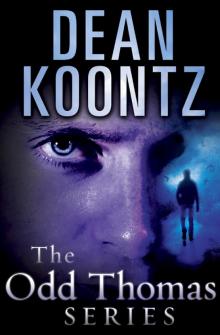 The Odd Thomas Series 7-Book Bundle
The Odd Thomas Series 7-Book Bundle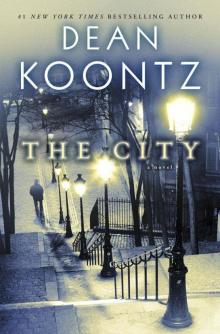 The City: A Novel
The City: A Novel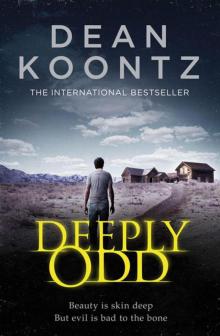 Deeply Odd ot-7
Deeply Odd ot-7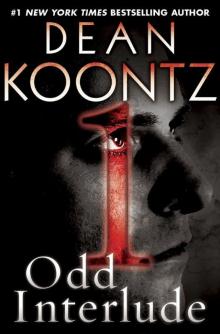 Odd Interlude #1 (An Odd Thomas Story)
Odd Interlude #1 (An Odd Thomas Story)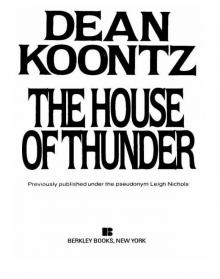 The House of Thunder
The House of Thunder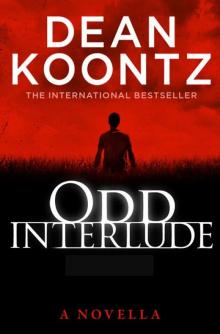 Odd Interlude ot-5
Odd Interlude ot-5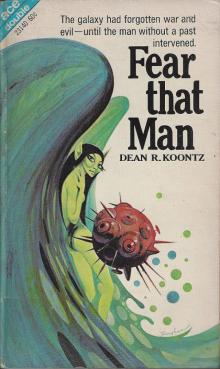 Fear That Man
Fear That Man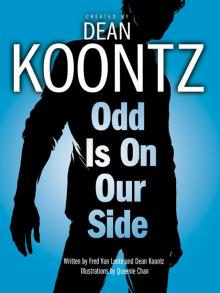 Odd Is on Our Side
Odd Is on Our Side Relentless
Relentless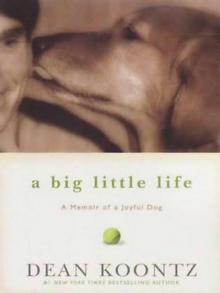 A Big Little Life
A Big Little Life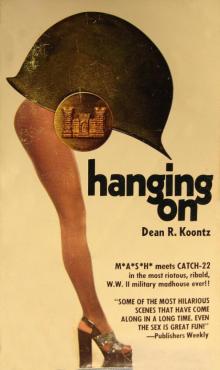 Hanging On
Hanging On The Forbidden Door
The Forbidden Door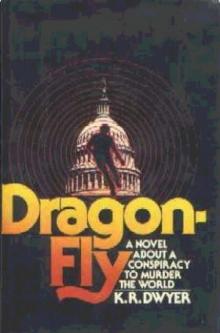 Dragonfly
Dragonfly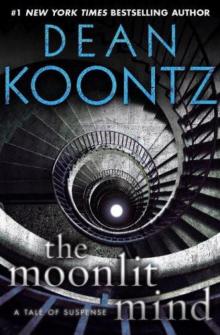 The Moonlit Mind: A Tale of Suspense
The Moonlit Mind: A Tale of Suspense Final Hour (Novella)
Final Hour (Novella) The Odd Thomas Series 4-Book Bundle: Odd Thomas, Forever Odd, Brother Odd, Odd Hours
The Odd Thomas Series 4-Book Bundle: Odd Thomas, Forever Odd, Brother Odd, Odd Hours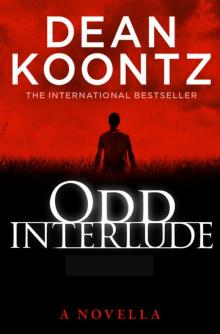 Odd Interlude (Complete)
Odd Interlude (Complete)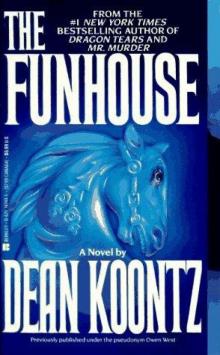 The Funhouse
The Funhouse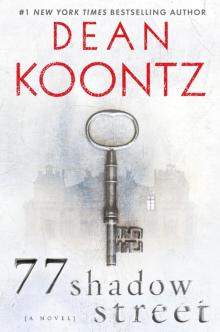 77 Shadow Street
77 Shadow Street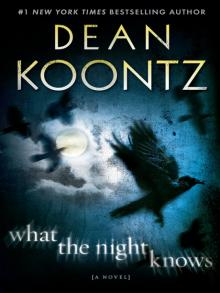 What the Night Knows
What the Night Knows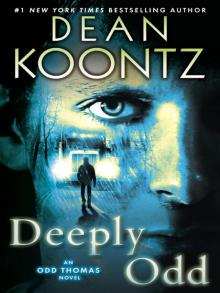 Deeply Odd: An Odd Thomas Novel
Deeply Odd: An Odd Thomas Novel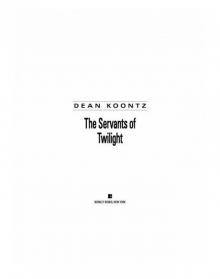 The Servants of Twilight
The Servants of Twilight Star quest
Star quest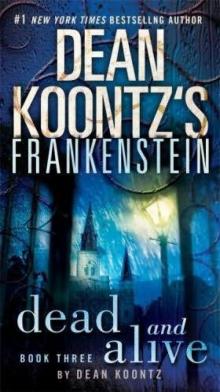 Frankenstein Dead and Alive: A Novel
Frankenstein Dead and Alive: A Novel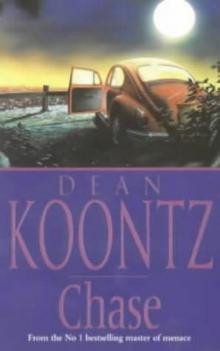 Chase
Chase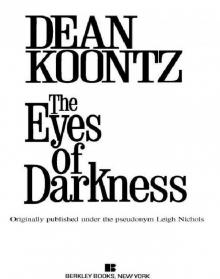 Eyes of Darkness
Eyes of Darkness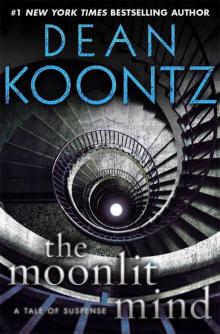 The Moonlit Mind: A Tale of Suspense (Kindle Single)
The Moonlit Mind: A Tale of Suspense (Kindle Single) Sussurri
Sussurri The Moonlit Mind (Novella)
The Moonlit Mind (Novella)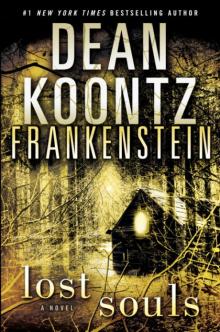 Frankenstein: Lost Souls - A Novel
Frankenstein: Lost Souls - A Novel![Ricochet Joe [Kindle in Motion] (Kindle Single) Read online](http://i1.bookreadfree.com/i2/04/05/ricochet_joe_kindle_in_motion_kindle_single_preview.jpg) Ricochet Joe [Kindle in Motion] (Kindle Single)
Ricochet Joe [Kindle in Motion] (Kindle Single)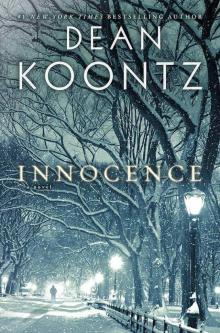 Innocence: A Novel
Innocence: A Novel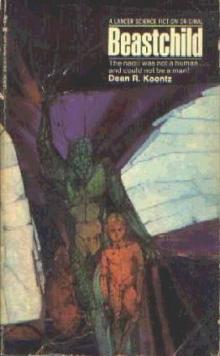 Beastchild
Beastchild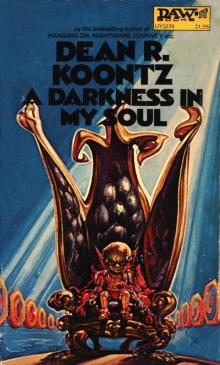 A Darkness in My Soul
A Darkness in My Soul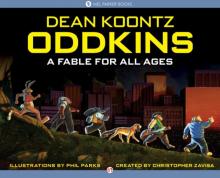 Oddkins: A Fable for All Ages
Oddkins: A Fable for All Ages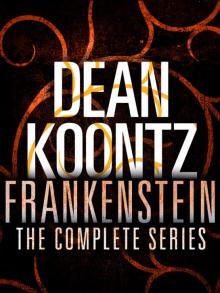 The Frankenstein Series 5-Book Bundle
The Frankenstein Series 5-Book Bundle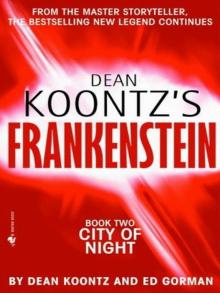 Frankenstein - City of Night
Frankenstein - City of Night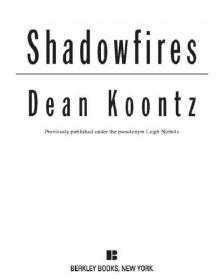 Shadowfires
Shadowfires Last Light (Novella)
Last Light (Novella) Frankenstein - Prodigal Son
Frankenstein - Prodigal Son Ticktock
Ticktock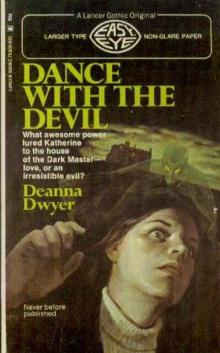 Dance with the Devil
Dance with the Devil You Are Destined to Be Together Forever (Short Story)
You Are Destined to Be Together Forever (Short Story)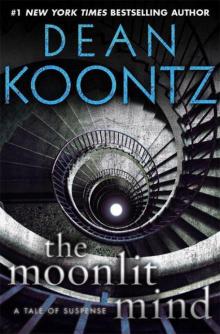 The Moonlit Mind (Novella): A Tale of Suspense
The Moonlit Mind (Novella): A Tale of Suspense Darkness Under the Sun
Darkness Under the Sun Dark Of The Woods
Dark Of The Woods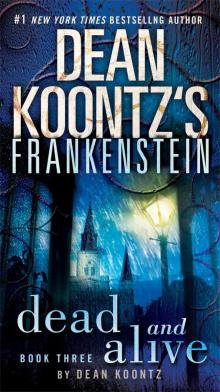 Dean Koontz's Frankenstein
Dean Koontz's Frankenstein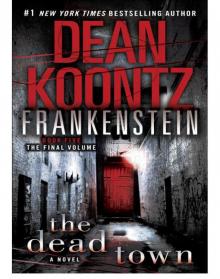 Frankenstein
Frankenstein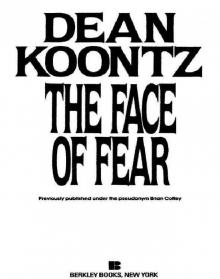 The Face of Fear
The Face of Fear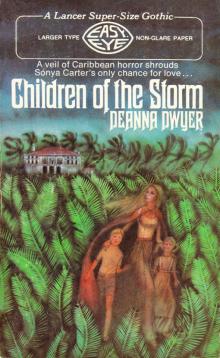 Children of the Storm
Children of the Storm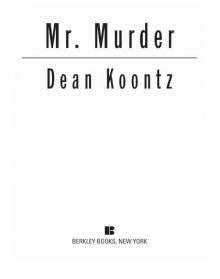 Mr. Murder
Mr. Murder